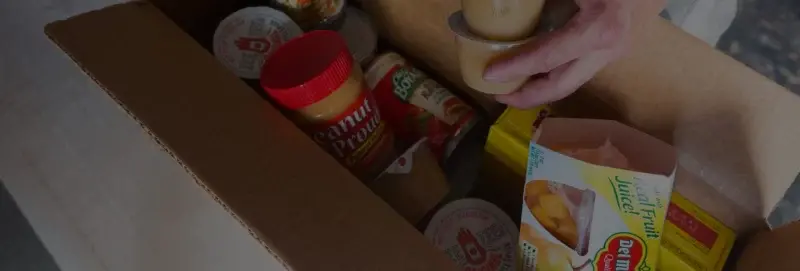Relocation companies are businesses that specialize in helping individuals and families move their possessions from one location to another. These companies offer a range of services, including packing and unpacking, loading and unloading, transportation, and storage.
When it comes to moving, one of the most overlooked aspects is the packing food items. Proper food packing is essential for ensuring that your food items arrive at your new location intact and in good condition. Failure to pack your food items properly can result in spoilage, contamination, or damage, which can lead to food wastage and additional expenses.
ISS Relocations is a leading relocation company that provides top-quality relocation services worldwide. The company has a team of experienced professionals who work tirelessly to ensure that all clients’ goods, including food items, are relocated safely and efficiently.
Choosing the Right Packaging Material
Choosing the right packaging material is crucial for the safe transport of food items during a move. Quality packaging materials will ensure that your food items are protected from damage, contamination, or spoilage during the move.
Types of Packaging Materials Suitable for Food Items
1. Bubble Wrap
Bubble wrap is an excellent packaging material for fragile food items. The air-filled bubbles provide a cushioning effect that protects the food items from damage during transportation.
2. Packing Paper
Packing paper is an affordable and versatile packaging material that can be used to wrap food items individually or to fill empty spaces in boxes. The paper helps to cushion the food items and prevent them from shifting during transportation.
3. Foam Padding
Foam padding is a soft and flexible material that can be used to cushion delicate food items such as fruits, vegetables, and eggs. The foam padding provides excellent shock absorption, which helps to prevent damage during transportation.
4. Plastic Wrap
Plastic wrap is an excellent packaging material for perishable food items such as meats, fish, and dairy products. The wrap helps to seal in the freshness and prevent contamination during transportation.
5. Cardboard Boxes
Cardboard boxes are the most common packaging material used for food items during a move. They come in various sizes and shapes, and they provide excellent protection for non-perishable food items.
Tips for Choosing the Right Packaging Material
1. Consider the Weight and Size of the Food Item
Choose packaging materials that are appropriate for the weight and size of your food items. Heavy items should be packed in sturdy boxes, while fragile items should be packed with materials that provide extra cushioning.
2. Consider the Fragility of the Food Item
Fragile food items such as eggs, fruits, and vegetables should be packed with materials that provide excellent shock absorption, such as foam padding or bubble wrap.
3. Consider the Duration of the Move
If you are moving long distances, you should consider using packaging materials that provide excellent protection against heat, moisture, and humidity. This will help to prevent spoilage and contamination during the move.
Preparing the Food Items for Packing
Properly preparing food items before packing is essential for ensuring that they arrive at your new location in good condition. Failure to prepare your food items properly can result in spoilage, contamination, or damage.
8 Tips for Preparing Food Items for Packing
1. Clean the Food Items
Before packing your food items, make sure to clean them thoroughly to remove any dirt, dust, or debris.
2. Dry the Food Items
Make sure to dry your food items thoroughly before packing them to prevent moisture from causing spoilage.
3. Use Airtight Containers for Perishable Items
When it comes to packing perishable items such as fresh produce, dairy, or meat products, using airtight containers is essential to prevent spoilage or contamination. Here are some tips to help you pack perishable items in airtight containers:
- Use plastic containers with tight-fitting lids: Plastic containers with Snap-on or screw-on lids are the best option for packing perishable items. Make sure the lids fit tightly to prevent air from entering the container.
- Wrap the items in plastic wrap or foil: Before placing perishable items in the container, wrap them tightly in plastic wrap or foil. This will help to seal in any moisture and prevent it from escaping.
- Label the containers: It’s important to label the containers with the contents and date packed. This will help you keep track of what you’ve packed and when it was packed.
- Pack the containers in a cooler: If you’re moving a long distance or don’t have access to a refrigerator, pack the containers in a cooler with ice packs. This will help to keep the items cold and fresh during transit.
4. Seal Non-Perishable Items
Non-perishable food items such as canned goods, dry pasta, or cereal can be packed in their original packaging as long as they’re sealed properly. Here are some tips for sealing non-perishable items:
- Check for damage: Before packing non-perishable items, make sure the packaging is not damaged. Damaged packaging can allow air, moisture, or pests to enter, which can spoil the food.
- Use airtight bags or containers: If you’re packing loose items such as dry pasta or rice, use airtight bags or containers to prevent them from spilling or getting crushed during transit.
- Label the items: It’s important to label non-perishable items as well. This will help you keep track of what you’ve packed and make it easier to unpack once you arrive at your destination.
- Pack heavy items at the bottom of the box: When packing boxes, always place heavier items at the bottom. This will help to distribute the weight evenly and prevent the box from tipping over during transit.
5. Label All Food Items
Labelling all food items is important for several reasons. It will help you keep track of what you’ve packed, make it easier to unpack once you arrive at your destination and ensure that the movers handle the boxes with care. Here are some tips for labeling food items:
- Use a permanent marker: Use a permanent marker to label each box with its contents and any special instructions such as “fragile” or “this end up.”
- Label perishable items: Make sure to label all perishable items with the contents and date packed. This will help you keep track of when the items were packed and when they need to be refrigerated.
- Keep a list of all packed items: Make a list of all the food items you’ve packed and keep it with you during the move. This will help you keep track of what you’ve packed and make it easier to unpack once you arrive at your destination.
6. Packing Food Items
Proper Packing Techniques: These are essential to prevent damage or spoilage during transit. Here are some techniques to follow when packing food items:
- Pack heavier items at the bottom of the box: When packing boxes, always place heavier items at the bottom. This will help to distribute the weight evenly and prevent the box from tipping over during transit.
- Use bubble wrap or foam padding for fragile items: If you’re packing fragile items such as glass jars or bottles, use bubble wrap or foam padding to protect them from damage.
- Use packing paper to fill empty spaces in the box: To prevent items from shifting during transit, fill empty spaces in the box with packing paper. This will help to keep items in place and prevent them from bumping into each other.
- Use plastic wrap to secure items in the box: Once you have placed all the food items in the box and filled any empty spaces with packing paper, it’s time to secure them in place using plastic wrap. Plastic wrap is an excellent way to keep the food items from moving around during transportation. Wrap the plastic wrap tightly around the box, making sure to cover all sides.
- Seal the box with packing tape: Once you have secured the items in place using plastic wrap, it’s time to seal the box. Use high-quality packing tape to seal the box shut. Make sure to reinforce the bottom of the box with tape to prevent it from breaking open during transportation. Use enough tape to cover all the seams of the box, ensuring that it is completely sealed.
7. Loading and Unloading Food Items
Importance of Proper Loading and Unloading: Loading and unloading food items require care and attention to prevent damage. During transportation, boxes can shift and move around, causing the food items to become damaged. Proper loading and unloading can prevent such occurrences and ensure that your food items arrive at your destination in good condition.
Tips for Loading and Unloading Food Items:
- Use dollies or carts for heavy boxes: Heavy boxes can be difficult to carry and may cause injury. It is advisable to use dollies or carts to transport heavy boxes. This not only makes it easier to move the boxes but also reduces the risk of injury.
- Load boxes in a way that prevents them from shifting: When loading the boxes into the truck, make sure to load them in a way that prevents them from shifting during transportation. Use ropes or straps to secure the boxes in place, preventing them from moving around. Place heavier boxes at the bottom of the truck and lighter ones on top.
- Unload boxes with care: When unloading the boxes from the truck, be careful not to drop them. This can cause the food items to become damaged. Use dollies or carts to transport the boxes to the desired location.
- Check for damage immediately upon unloading: Once you have unloaded the boxes, check for any damage immediately. If any damage is found, take pictures and contact the relocation company to file a claim.
8. Storing Food Items Upon Arrival
Importance of Proper Storage: Once you have arrived at your destination, it’s essential to store the food items properly. Proper storage can prevent spoilage and ensure that the food items remain fresh.
Tips for Storing Food Items:
- Store perishable items in the refrigerator or freezer immediately: Perishable items should be stored in the refrigerator or freezer immediately upon arrival. This can prevent spoilage and ensure that the items remain fresh. Check the expiration date of the food items and use them accordingly.
- Keep non-perishable items in a dry, cool place: Non-perishable items can be stored in a dry, cool place. Make sure to keep them away from direct sunlight and heat, as this can cause them to become stale.
- Check for any damage or spoilage upon arrival: Once you have stored the food items, check for any damage or spoilage immediately. If any damage is found, take pictures and contact the relocation company to file a claim.
- Use food items within their expiration date: Make sure to use the food items within their expiration date. This can prevent spoilage and ensure that the items remain fresh.
Conclusion
When packing food items with a relocation company, it’s essential to choose the right packaging material, prepare the food items properly, pack them correctly, load and unload them with care, and store them properly upon arrival. Packing food items for relocation can be a daunting task, especially when you’re dealing with perishable items. However, with the right packaging materials, proper preparation, and careful handling, you can ensure that your food items arrive at their destination safely and in good condition.
Proper food packing is not only important for the safety and quality of your food items but also for your safety and the safety of those around you. Improperly packed food items can lead to accidents, injuries, and even foodborne illnesses. By following the tips outlined in this blog, you can ensure that your food items are packed and handled safely during your relocation. Don’t forget to choose a reliable and experienced relocation company like ISS Relocations to help you with your move.
When it comes to relocating food items, it’s important to choose a relocation company that has the necessary experience and expertise to handle such items with care. ISS Relocations is a relocation company that specializes in the safe and hassle-free relocation of all types of goods, including food items. With over 25 years of experience in the relocation industry, ISS Relocations has the knowledge, skills, and equipment needed to ensure that your food items are packed, loaded, and transported safely and efficiently.
They offer a range of services, including packing, loading, transportation, unloading, and unpacking, to make your relocation as stress-free as possible. ISS Relocations is committed to providing its customers with the highest level of service and satisfaction. They have a team of highly trained and experienced professionals who are dedicated to ensuring that your food items and other belongings are relocated with the utmost care and attention.
In conclusion, if you’re planning to relocate and need to move food items, make sure to choose a reliable and experienced relocation company like ISS Relocations. With their help, you can ensure that your food items arrive at their destination safely and in good condition, allowing you to focus on settling into your new home. Get a free moving quote today!
















